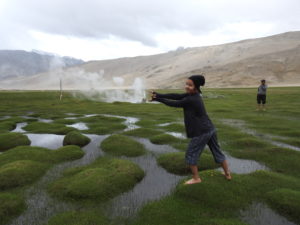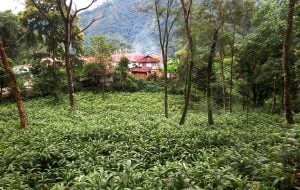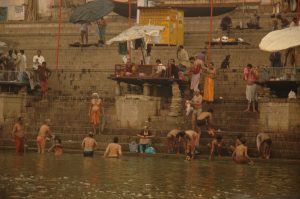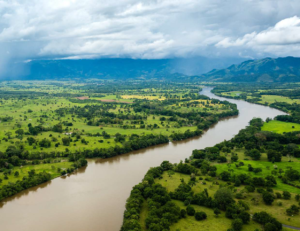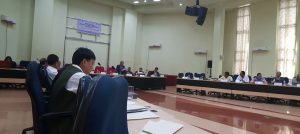Shiva Prasad Pudasaini has lived on the banks of the Bagmati river all his life, and he has seen the river shrink over the last three decades while the population in Kathmandu, Nepal’s capital city, has boomed.
“When I was young, I used come and swim here. It was big and clean,” says the 71-year-old. But today, at a time in the year when monsoon rains have just retreated, the river is not even knee-deep at Guhyeshwari, in north-eastern Kathmandu.
The river started deteriorating in the late 1980s when Kathmandu’s population began growing exponentially, and carpet and garment industries started operating on the river banks. Today, there is so much pressure on the river that Pudasaini says “the river will become dirty even if people just wash their hands”.
“The only way to revive the Bagmati is to cut that mountain and bring the Indrawati,” he declares, pointing towards the Nanglebhare hills, beyond which the Indrawati and Melamchi rivers flow. The Melamchi is expected to supply drinking water to the Kathmandu valley from next year. Diverting the Indrawati to replenish the Bagmati might not be practical or sustainable, but Pudasaini’s message reflects the dire need to increase water flow in Kathmandu’s rivers.
The government and experts have long felt that the Bagmati’s water flow needs to be restored, and various studies, including the Bagmati Action Plan 2009-2014, have identified increasing the water flow in the Bagmati River Basin as the main requirement to revive Kathmandu’s rivers.
The Bagmati River Basin Improvement Project has plans to construct two artificial dams in the upper stretch of the Bagmati. The Dhap and Nagmati dams, to be built in the Shivapuri National Park, will collect rainwater in the monsoon and release it in a controlled manner in the dry season. The construction of the Dhap dam began in April. Covering an area of around 13 hectares, the dam will hold 850,000 cubic metres of water and release it at a rate of 40 litres per second during the dry season, while the larger Nagmati will hold 8,000,000 cubic metres of water and release it at a rate of 400 litres per second.
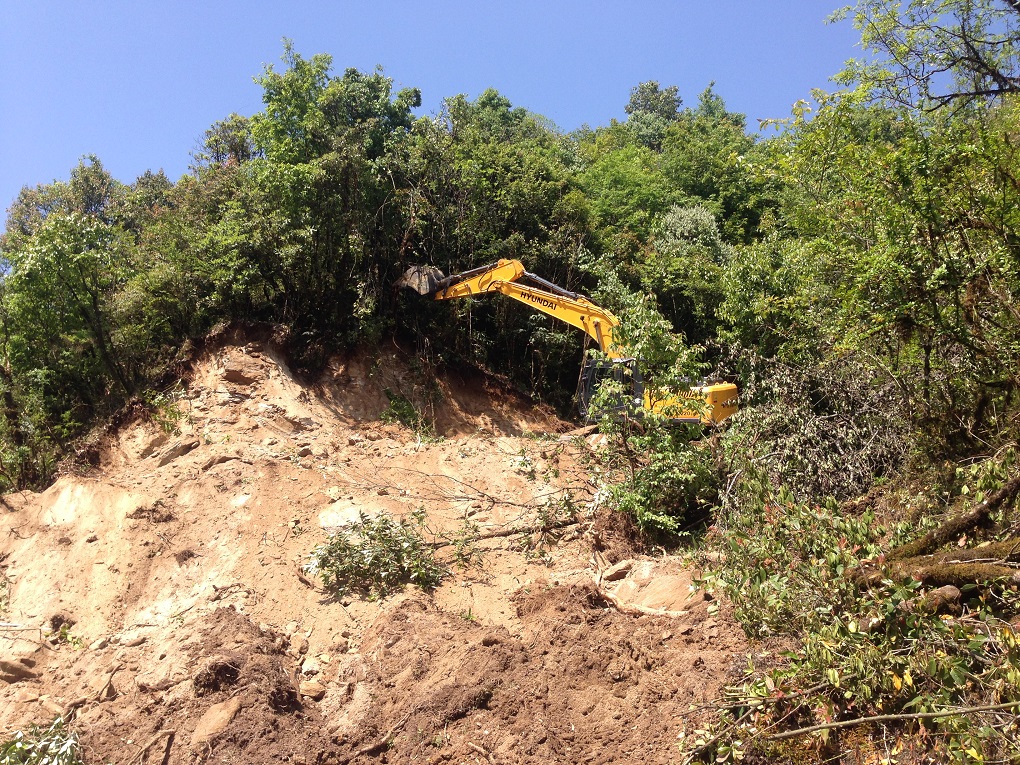
“Our [argument is that] both dams should be constructed to make a significant impact in the water flow,” says Kebal Pandit, a civil engineer at the BRBIP. “But we haven’t got approval for the Nagmati dam from the forestry ministry.”
The forestry ministry has not yet given permission as it is wary that the 90-metre high Nagmati dam might pose a flood risk to Kathmandu, and that it would be built in a seismically active zone.
Groundwater recharge
One of the contributing factors to the decrease in water-flow in Kathmandu’s rivers is the overuse of surface water and over-extraction of groundwater. Large volumes of water are diverted from almost all rivers for drinking water at the headwaters. “During the dry season, up to 90% of the water from the Sundarijal is diverted for drinking water supply,” says Ashish Bhadra Khanal, head of the project implementation unit of the BRBIP.
The Bagmati and its main tributaries — the Bishnumati, Rudramati, Icchumati, Manahara, Balkhu and Nakkhu — are not replenished by snowfall; their main source of water is rainfall. On average, Kathmandu receives around 1,900 millilitres of water from rain every year — 80% of which occurs during the monsoon season from June to September.
Surface water alone is not sufficient to quench the thirst of Kathmandu, which demands more than 280 million litres of water per day (MLD). The completion of the Melamchi Drinking Water Supply project is supposed to supply 170 MLD of water to Kathmandu, and will bring some respite, but many believe that restoring the depleted water table in the Kathmandu valley is the only sustainable solution.
As such, the BRBIP also has plans to harvest rainwater and recharge it into aquifers feeding 2,500 households in the north-eastern region of Kathmandu, one of the more suitable areas for shallow aquifer recharge according to a study on groundwater depletion.
Traditionally, water flow in these rivers was regulated through natural and planned water recharge systems. Much of the land around them was barren, allowing for slow recharge, and hundreds of ponds and rajkulos (water canals) aided the recharge of water aquifers. But today almost all of the ponds have dried up and the rajkulos have been replaced by roads. More than 50% of the land surface in Kathmandu’s urban area is built-up and covered by non-permeable concrete or tarmac. As a result, the rainwater quickly flows into the river without much opportunity to seep into the ground.
The government has a few programmes to encourage individual households or institutions to harvest rainwater but, believes water expert Vishnu Prasad Pandey, institutionalising the systematic recharge of groundwater is the only sustainable way to revive the Bagmati water basin.
“There is a provision to provide tax cuts on building registrations if people come up with a plan to harvest rainwater from a 10,000 square feet area. As far as I know, nobody has availed the facility so far,” says Rabin Man Shrestha, chief of the environment management division for Kathmandu Metropolitan City.
Instead, most of Kathmandu’s hospitals, apartment buildings, schools and factories have sunk borewells to meet their demands, including the city’s own water supply utility, which draws up water from almost a dozen places. This depletion of the water table is not offset by natural recharge. Meanwhile, some private companies provide a service to harvest rainwater for domestic use in the dry season, and to recharge the water aquifer.
“230 million litres of water is extracted from the Kathmandu valley every day. Our aim is to put in more than that in the five years since the company’s inception,” says Gokul Dangal, founder of BestPaani, a private company that installs rainwater harvesting and groundwater recharge systems. “We have been around for two years and we are well on our target.”
An integrated approach
The Bagmati and Kathmandu’s other rivers do more than just supply water for irrigation and household use. The rivers are connected to people’s culture, faith and civilisation. With this in mind, the government formed the High-Powered Committee for the Integrated Development of Bagmati Civilization to regulate Kathmandu’s entire river system. The committee is focused on the rivers between Sundarijal and Sinamangal at present and is carrying out a major river beautification project from Sundarijal to Guheshwari. There are also plans to improve the river downstream including by restoring religious shrines.
![<p>The Bagmati has not only dwindled, but also become increasingly polluted [image by: taylorandayumi/Flickr]</p>](https://dialogue.earth/content/uploads/2017/11/4649262079_baba4c2613_b.jpg)

